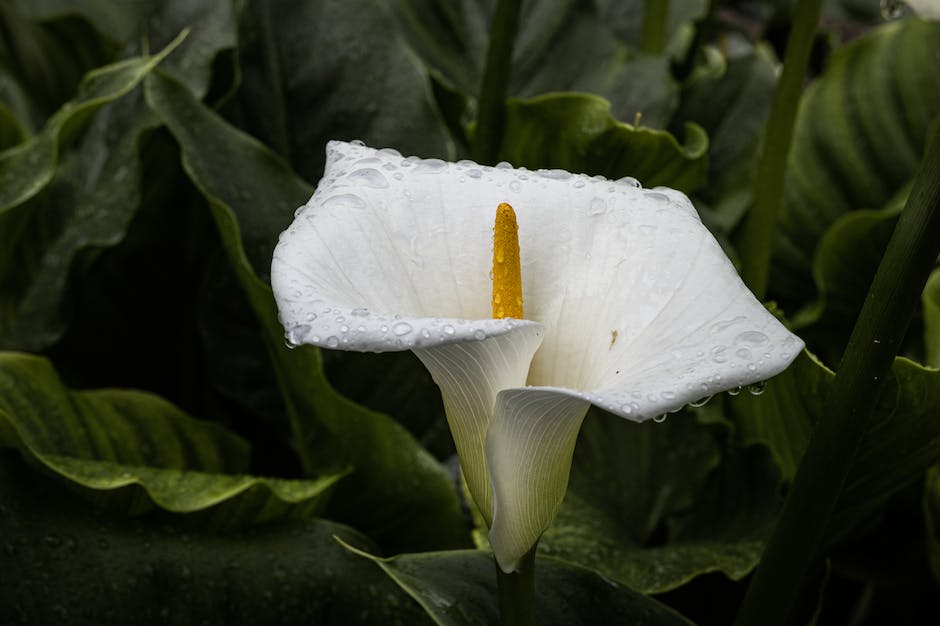Eliminating Bermuda Grass from Your Lawn

Bermuda grass, scientifically known as Cynodon dactylon, is a common grass found in various regions across the globe. While it brings some benefits such as soil stability and a touch of green, it can also be invasive, becoming a problem for many gardeners and homeowners. To effectively manage and rid your lawn of Bermuda grass, it’s important to understand the characteristics and growth patterns of this particular grass species. Then, knowing when and how to use the appropriate herbicides while incorporating physical removal techniques can offer a multi-pronged approach to maintain a lush, Bermuda-free lawn or garden.
Understanding Bermuda Grass
The Remarkable Tenacity of Bermuda Grass: The Unseen Battle
Do you feel like you’re locked in an ongoing battle with Bermuda grass in your garden? Well, you’re not alone! This incredibly tenacious plant is a common foe for many green thumbs. But why is Bermuda grass so hard to eradicate? The answer lies in its compelling survival mechanisms that give it an edge over other grass types.
For starters, Bermuda grass has a unique and complex rooting system which facilitates its tough survival instincts. These roots can reach an impressive depth of up to 60 inches, ensuring the plant can access nutrients and water even in unfavorable conditions – the drought-prone months can’t touch this grass! Moreover, Bermuda grass uses these deep roots to store surplus food and energy which it can utilize during times of stress. If you ever wondered why this grass seems to rebound even after rigorous mowing or weeding, the hidden energy reserves are the answer.
Another critical factor to consider is the extreme reproductive versatility of Bermuda grass. This hardy grass not only propagates via seeds but also through its powerful rhizome and stolon systems. Therefore, even if no seeds are present, it can regrow just from a small shredded rhizome or stolon piece, making it notably difficult to control. And if that weren’t enough, Bermuda grass seeds can stay dormant in the soil for many years, just waiting for the right conditions to sprout again. If only all plants were this resilient!
The plant’s rapid growth pattern also contributes to the constant struggle. Bermuda grass grows extremely fast, especially during the hot summer months. This rapid growth rate leads to quick wound recovery, which is why your Saturday afternoon mowing efforts can seem all for naught by Tuesday.
Bermuda grass’s resistance to herbicides is another bone of contention for many gardeners. This grass type demonstrates a striking tolerance to many commercial herbicides. Furthermore, any remaining roots after herbicidal treatment can lead to regeneration of the whole plant, rendering your hard work in vain.
In a nutshell, Bermuda grass’s tenacity lies in its deep and complex rooting system, its multiple reproduction methods, its rapid growth rate, and its significant resistance to herbicides. It’s a perfect storm of persistence and resilience. However, understanding these secret survival mechanisms can help develop a more effective eradication strategy. With consistency, patience, and the right approach, keep faith that the battle against Bermuda grass can be won!
So, the next time you dream about your Bermuda grass-free garden, remember: knowledge is power. Armed with this information, you’re not just a gardener—we dare say you’re a ‘grass-strategist’! Good luck out there– your garden is rooting for you!

Appropriate Herbicides to Use
Understanding the Lifespan & Adaptable Growth of Bermuda Grass: A Guided Journey
Welcome, fellow green enthusiasts! You’re about to embark on an enlightening adventure into the intriguing life cycle of Bermuda grass. Grasping the nature of this grass will be our key in drawing up effective ways to manage its relentless growth.
Soil temperature plays a pivotal role in Bermuda grass germination. Notably, optimal soil temperatures for this species range between 68-95 degrees Fahrenheit. That’s why the grass sprouts profusely during the warmth of late spring and early summer. You might’ve also observed that Bermuda grass seedlings emerge more quickly from shallow depths, within 0.25 inches from the soil surface.
Now let’s dive into the significant transition from seedling to mature plant. Bermuda grass matures rapidly, visibly reaching the stage of a fully developed plant within 2-3 months post-germination. Its unique growth classified into two essential stages; vegetative growth (leaves and stems production) and reproductive growth (seed head production), is what gives Bermuda grass its energetic spirit to overcome many environmental adversities.
While considering Bermuda grass’s resilience, it’s crucial to understand how these characteristics carry forward into its winter behavior. Often, Bermuda grass enters a state of winter dormancy as temperatures dip below 50 degrees Fahrenheit, an adaptation that protects it during colder periods. Even then, the grass’s deep-rooted system ensures survival, poised ready to burst back into growth with the arrival of warmer weather.
Talking about adaptability, Bermuda grass’s inherent ability to withstand varying degrees of saline conditions is sure to pique your interest. While too much salt can inhibit growth, this sturdy grass has a moderate tolerance for saline conditions, making it a common choice for coastal landscapes and lands irrigated with poor quality water.
Bermuda grass’s signature rapid growth creates a thick, lush turf, which, while appealing to the eye, can also have a suffocating effect on other flora. This turf-securing tendency deprives other plants of light, water, and essential nutrients, reinforcing Bermuda grass’s dominance.
Think about pest resistance, and Bermuda grass flaunts yet another survival tactic. Its fast growth and resilient nature make it less susceptible to numerous pests. Natural strength combined with the routine use of specific pesticides cultivates a formidable defense mechanism against common lawn pests.
Now, let’s talk about its versatility in using photosynthesis in its favor – a real game-changer. Irrespective of the growing conditions, Bermuda grass can switch between C3 (Cool Season) and C4 (Warm Season) photosynthetic pathways, giving it an adaptive edge over many other grass types. This dual mode enables its growth during multiple seasons, making eradication efforts even more challenging.
To conclude, Bermuda grass, with its survival-first adaptations, presents a rigorous test to any gardening or landscaping enthusiast. Though its tenacity can be tiresome, acknowledging this grass’s adaptations and understanding its life cycle is a surefire way to gadget effective management methods. Arming oneself with this knowledge is vital – the first step of victory is to know your opponent well!

Physical Removal Techniques
As a committed hobbyist in the realm of weed control, one learns to anticipate Bermuda grass’s various sneaky ways. It’s a survivor plant, equipped with robust coping mechanisms. Once understood, it’s possible to develop effective eradication strategies that leverage physical techniques to leverage these unique characteristics. Remember, this is a battle of wits as well as physical might.
Bermuda grass marks the arrival of optimal soil temperatures for germination by sneakily emerging from shallow depths. Its transformation from a seemingly innocent seedling to a mature, lawn-stifling plant doesn’t happen overnight. This growth pattern is an essential characteristic to understand, especially when devising any physical removal technique. The process is split into two main growth stages—vegetative and reproductive growth. Attention to these stages can shed further light on Bermuda grass’s behavior during winter dormancy.
Armed with the knowledge that Bermuda grass can withstand a variety of saline conditions, it is possible to tailor physical removal techniques to effectively manage this stubborn grass. Appreciating the rapid growth of Bermuda grass, one can understand the suffocating effects it imposes on other flora, giving it the upper hand in any yard it commandeers.
However, despite the Bermuda grass’s resistance to many common pests, it is still susceptible to persuasive physical techniques. For example, sod cutting, also known as scalping, can provide a fresh start for a Bermuda grass-infested lawn. By literally cutting underneath the grass and severing it from its root system, it can be entirely removed. If Bermuda grass has invaded flower beds or vegetable gardens, hand-digging can work wonders. This method can be laborious, requiring persistence and a passion for detail.
One ingenious method is solarization, which many enthusiastic hobbyists find a fun summer project. This involves protecting the Bermuda grass under a clear plastic tarp during the scorching summer heat. As it accumulates trapped sunlight, the Bermuda grass is heated beyond its acceptable temperature range which starves the roots and seeds of their life support.
In similar spirit, soil conditioning, a practical and organic method, is where Bermuda grass has its hardy nature turned against it. Increasing soil fertility can make the lawn healthier and more competitive, suppressing the Bermuda grass and giving other flora a chance to thrive.
Combining such physical techniques, always considering the inherent growth stages, reproductive methods, and tough resilience of Bermuda grass, can be the key to managing this highly adaptable weed. Moreover, regular monitoring and quick action when it reappears can make eradication not only possible but also satisfying. As in any hobby, the thrill lies in mastering the technique and relishing the challenge.

Through a thorough understanding of Bermuda grass and its tenacious nature, one can devise efficient strategies to eliminate it. Incorporating the use of carefully chosen herbicides as part of your strategy ensures that these unwanted grasses are effectively targeted. Physical removal techniques further aid in the fight against Bermuda grass, but it is crucial that these methods are executed properly to avoid any unwanted regrowth and to maintain the overall health of your lawn or garden. With diligent care and persistence, a Bermuda grass-free lawn isn’t just a dream, but an achievable reality.



